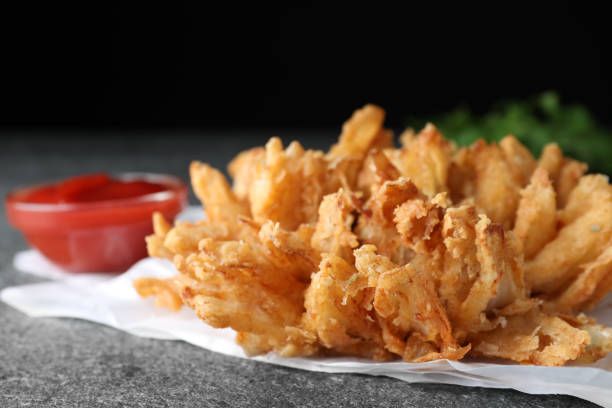Does Beef Jerky Go Bad? How Long Does It Last?
Beef jerky, with its salty flavor and satisfying chew, has quickly become a popular snack. Whether you eat it on the move, in the great outdoors, or just to get a protein boost, you may have wondered does beef jerky go bad? Here, we’ll learn all there is to know about beef jerky, from how it’s made to the telltale symptoms of when it’s gone bad and how to prevent it from happening in the first place.
What is Beef Jerky?
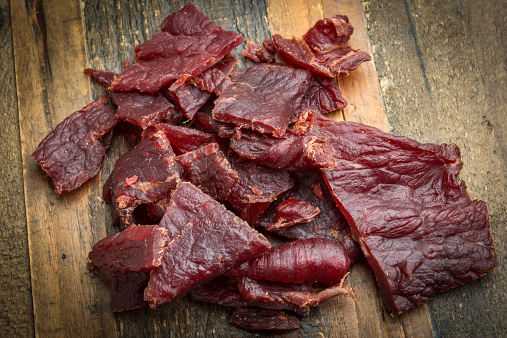
Dehydrated beef jerky is a dried meat snack produced from cattle trimmings. As far back as the ancient civilizations that discovered how to dry meat for long-term storage, people have been enjoying it.
Thin slices of beef are marinated in a combination of herbs, spices, and sometimes a curing agent such salt or sodium nitrate to make traditional beef jerky. After being marinated, the meat is dried until its moisture level is low enough to avoid spoiling. This may be done by smoking or dehydrating the meat.
How is Beef Jerky Made?
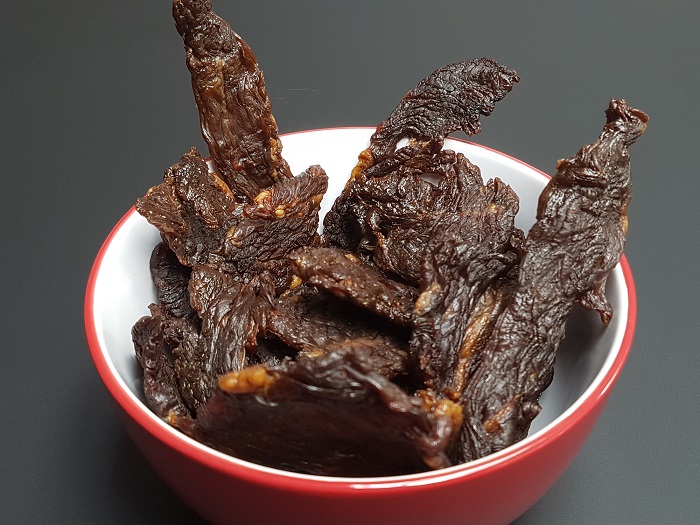
Making beef jerky is a multi-step procedure. Fat is removed from the meat, and then it is chopped into very thin strips. Soy sauce, Worcestershire sauce, liquid smoke, spices, and sugar are just some of the elements that may go into the marinade that goes on top of these strips. Marinating times range from a few hours to overnight, with the longer duration allowing more flavor to permeate the meat.
The meat is drained after being marinated and then either put on racks or hung to dry. In traditional preparations, the meat is smoked over low heat for many hours to add taste. These days, many people utilize professional dehydrators to do the same tasks. Meat is less likely to get contaminated with harmful germs and molds thanks to the drying process.
Does Beef Jerky Go Bad?

Yes, beef jerky can go bad. Although beef jerky lasts longer than fresh meat, it may still go bad. Beef jerky may go bad if it’s left out in the open, exposed to the elements, or stored incorrectly.
How Long Does Beef Jerky Last?
Beef jerky’s storage life is affected by several variables, such as its moisture level, packaging, and environment. Beef jerky sold in stores usually lasts between one and two years. However, depending on the drying method and ingredients, jerky prepared at home or by an artisan may not last as long.
Does Beef Jerky Have an Expiration Date?

While expiry dates are often included on the packaging of other perishable foods, beef jerky is not one of them. A “best by” or “sell by” date is more common. The best taste and quality will be achieved within this time frame, as suggested by the manufacturer. Beef jerky may still be perfectly OK to consume even after the expiration date has passed.
What are the Signs that Beef Jerky Has Gone Bad?
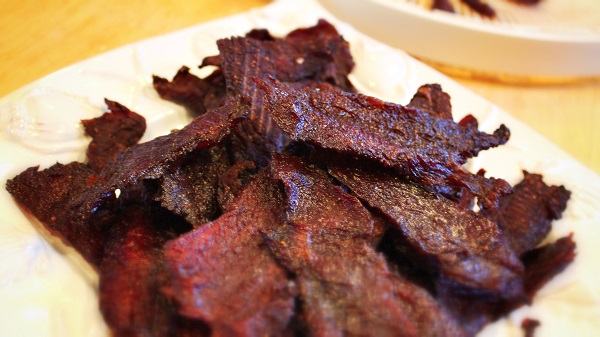
Beef jerky has a lengthy storage life, but it may still go bad under the wrong circumstances. If you’re wondering whether or not your beef jerky has gone bad, keep an eye out for these telltale symptoms:
- Off-putting odor: Beef jerky, when freshly made, has a pungent smell. Smelling sour or rotten is a telltale sign of deterioration.
- Mold or discoloration: If there is any mold or discoloration on the beef jerky, or if it has an odd texture (such sliminess), it has likely gone bad.
- Change in taste: If the beef jerky’s flavor has changed drastically from what you remember it tasting like, or if it tastes unpleasant, it’s better to throw it away.
Can You Eat Beef Jerky After the Expiration Date?
If beef jerky has been kept correctly and there are no symptoms of rotting, it may be consumed even after the expiry date has passed. The use-by date is more of a quality guideline than a safety one. If you must eat beef jerky beyond its expiry date, trust your instincts and look for symptoms of deterioration.
How to Store Beef Jerky to Make It Last Longer?
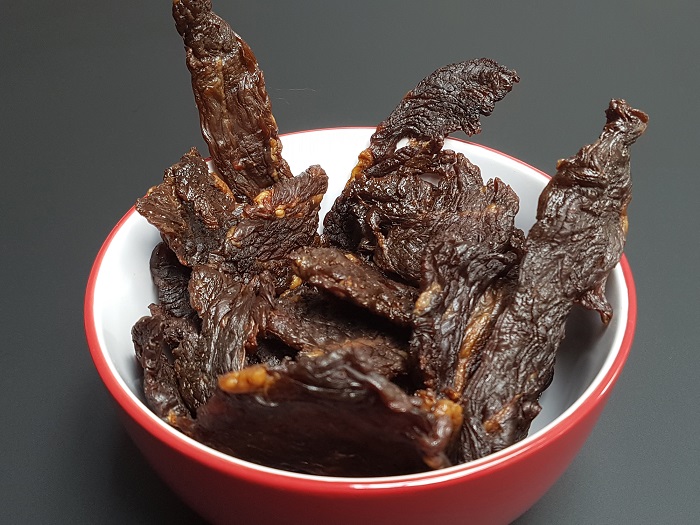
Beef jerky’s shelf life may be significantly prolonged with the right kind of storage. Some tips for proper storage are provided below.
- Keep it sealed: Beef jerky that has not been opened should be kept in its original packaging or transferred to an airtight container to avoid spoilage due to exposure to moisture and air.
- Limit exposure to light: Beef jerky loses its flavor when exposed to light, especially ultraviolet light. Keep it in a cold, dry area like a pantry or closet.
- Maintain proper temperature: Beef jerky is best kept in a cool, dry place away from direct sunlight. Spoilage may be hastened by high temperatures and humidity.
- Avoid oxygen exposure: Oxygen exposure may produce oxidation, which alters the jerky’s taste and texture, thus it should be avoided. Minimizing exposure to oxygen is possible using vacuum-sealed packaging or oxygen absorbers.
How to Tell if Beef Jerky Has Gone Bad?
Here are several signs that your beef jerky may have gone bad:
- Visual cues: Look for obvious symptoms of spoilage on the jerky, such as mildew, discoloration, or a slimy appearance.
- Texture changes: Beef jerky that has gone bad might alter textures, becoming either too dry or too wet, or even sticky or slimy.
- Off flavors: Flavors that aren’t quite right are a telltale sign of deterioration.
Beef jerky should be thrown out if any of these symptoms are present in order to prevent food poisoning.
Conclusion
Beef jerky is an excellent long-lasting snack due to its portability, taste, and shelf life. It has a lengthy shelf life, but you should still check for symptoms of deterioration if you buy it after the expiry date has passed.
Beef jerky is a delicious snack that can be safely consumed indefinitely as long as the right storage conditions are maintained and the signs of decomposition are recognized.


